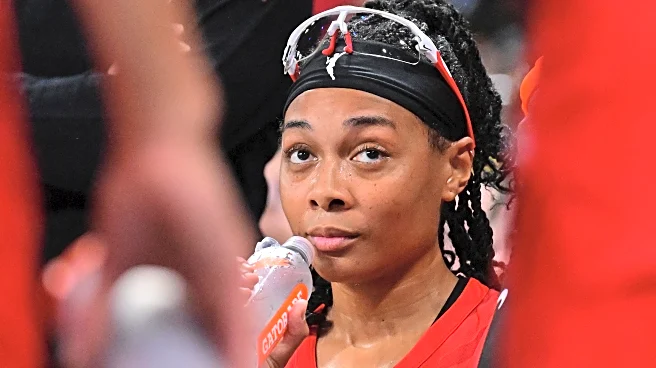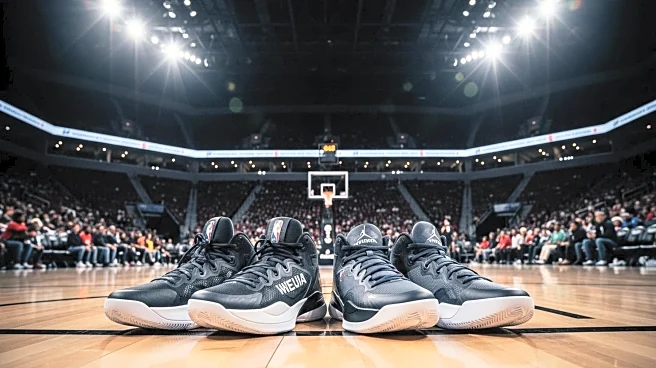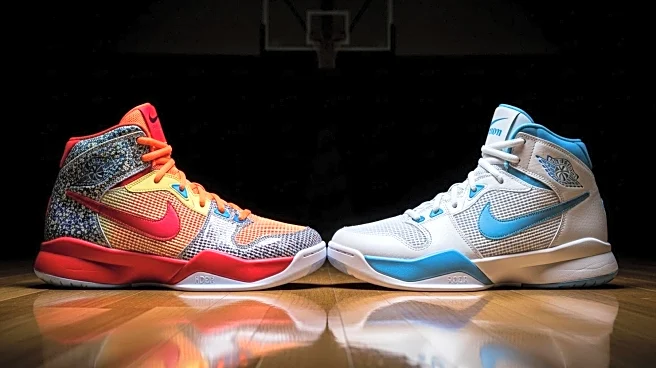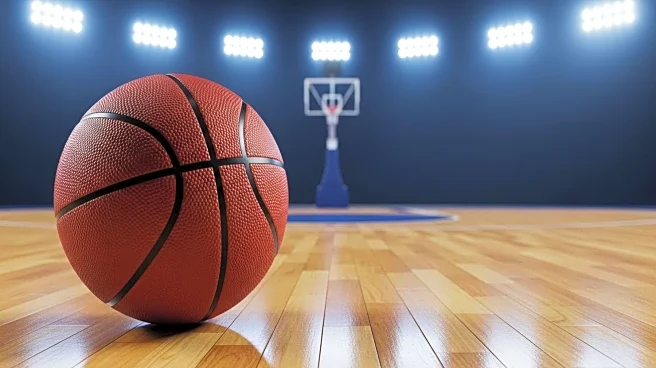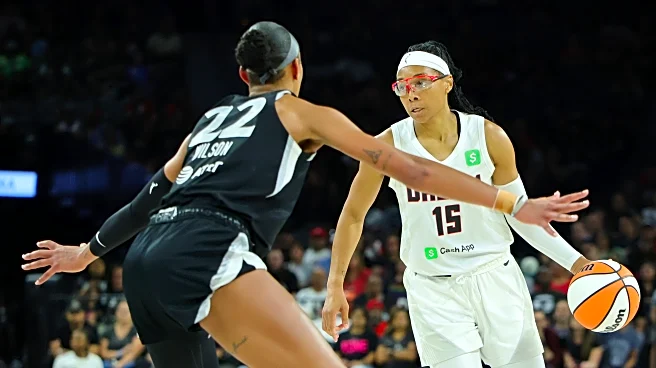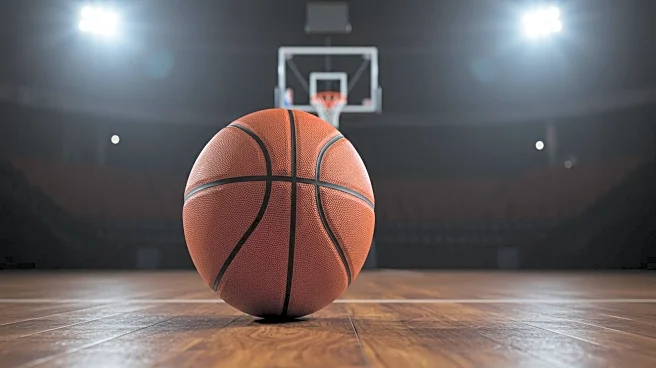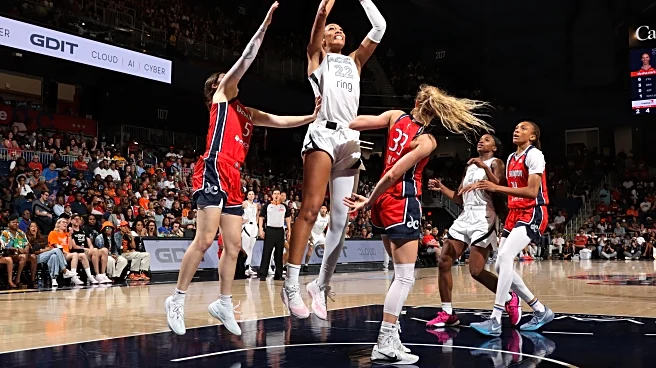
With their win over the New York Liberty on Saturday afternoon, the Atlanta Dream established a new franchise record for wins in a single season, securing their 24th victory with seven games to spare.
Among those 24 wins are two over the Minnesota Lynx, the most recent of which was achieved last Thursday, when the Dream became to only team to take two victories off the league-leading Lynx. In addition to winning the season series over Minnesota 2-1, Atlanta swept their three-game season set over the Phoenix
Mercury, which included sending Phoenix to a season-worst 23-point loss at the beginning of August. Saturday’s victory also earned Atlanta a split of their four-game season series with New York, with their 16-point victory over the depleted Liberty resulting in the Dream outscoring the defending champs by 13 points across the four contests.
Yet, there’s one thing missing from the Dream’s resume. Those 24 Ws do not include a win over one team: the Las Vegas Aces.
Atlanta’s lingering obstacle
It just so happens that the Aces arrive in Atlanta on Wednesday night for the third and final matchup between the two teams. And the game’s consequences extend beyond a box-checking accomplishment for the Dream. The outcome could determine which team ends up with the No. 2 playoff seed, giving them homecourt advantage in the first two rounds of the playoffs, including in a theoretical No. 2-vs.-No. 3 semifinal series between the two teams.
A win by the Dream would make an even bigger statement, as it would snap the Aces’ 11-game winning streak. Vegas previously won 11-consecutive regular-season games across the end of the 2022 season and the beginning of the 2023 season. If they can extend their current roll to 12 games, it will be the longest streak since the Connecticut Sun won 14-straight games in 2021. (The WNBA record is 18-straight, set by the 2001 Los Angeles Sparks; the Aces could match that mark if they win out.)
So, can the Dream get that elusive win over the Aces, completing their resume, snapping the visitors’ streak and, most importantly, securing their own hold on the No. 2 seed?
A look back at ATL’s two losses in Vegas
Let’s look back at the previous two matchups between the teams, both of which were held in Vegas.
On July 22, the first game out of the All-Star break for the Dream and a back-to-back for Aces, Vegas sent Atlanta to their second-worst loss of the season, a 15-point defeat, 87-72. Atlanta appeared to be temporarily invigorated by the All-Star break, leading 27-20 after the first quarter, only to fall back into an All-Star slumber characterized by poor shooting and even poorer ball security.
The Dream might have been able to survive a sub-40 percent shooting night if they had not turned the ball over 19 times, their second-sloppiest effort of the season, leading to 24 points off turnovers for the Aces; Atlanta, in contrast, scored just five points off 11 Vegas turnovers. The absence of Rhyne Howard, who was then out with the knee injury that caused her to miss about a month of the season, could serve as an excuse. The offensive attention she attracts likely would have eased the burden on Allisha Gray and Jordin Canada, who combined for 10 of the Dream’s giveaways.
The second matchup on August 19 saw Atlanta muster a much better wire-to-wire effort, even though the back-and-forth affair ended in a two-point defeat, 74-72. The loss was indicative of Atlanta’s season-long struggle to close out games, as the Dream committed four of their 10 turnovers in the final frame. They also connected on just five of their 15 shot attempts in the fourth.
The source of the Dream’s struggle to beat the Aces isn’t surprising
Across the two games, a couple of connected issues standout for Atlanta.
The first game was a particularly ineffective outing for Brionna Jones, as the Dream were outscored by a team-worst—and for her, season-worst—22 points during the customarily consistent Jones’ 25 minutes. She was likewise quiet in the Dream’s second loss. In both games, her shot attempts and rebounds were well below her season averages, indicating her struggle to execute her slower-and-steady, yet fundamentally-sound, post processes against the length and speed of the A’ja-led Aces. The neutralization of Jones saps the Dream of a reliable source of efficient scoring. Brittney Griner did pick up some of that slack in the second game, netting 16 points on 70 percent shooting. Yet, Vegas seemed unbothered by any Griner buckets; in fact, they appeared to encourage Atlanta to push the BG button.
As A’ja Wilson discussed after the game, she was often deployed on the Dream’s perimeter players, welcoming the challenge of defending away from the basket. That left more undersized options, such as Kierstan Bell or NaLyssa Smith, to deal with Griner. As a result, she scored better than her season norm, but, overall, Atlanta’s offense was much less potent that usual.
In short, A’ja is the source of Atlanta’s inability to operate their optimize offense against Vegas. And, she’s also a problem on the other end.
Big surprise: The reigning M’VP who is surging toward a possible back-to-back honor has made it difficult to defeat the Aces. The South Carolina native and Gamecock legend appears to enjoy facing off against Atlanta, even before her best bud Allisha Gray joined the Dream. For her career, Wilson is 15-6 against the Dream, averaging above her career averages in points, shooting percentage, rebounds, blocks and steals across those 21 games. Two years ago, she dropped a WNBA-record tying 53 points in Atlanta. This season, she posted 32 points, 12 boards and five blocks in the most-recent matchup; in the first game, she finished with 24 points, 12 rebounds, two blocks and two steals.
Is beating the Aces just a Dream?
To defeat the Aces, might the Dream need to follow their example? Vegas’ in-season turnaround has been fueled by experimentation, which includes their aforementioned more unconventional defensive assignments. Do the Dream likewise need to get funky?
Despite head coach Karl Smesko’s reputation as an offensive innovator, the Dream have not deployed many über-modern, out-of-the-box lineups. Specifically, Atlanta has mostly eschewed five-player small-ball alignments. That’s likely due to how great Jones has been for much of the season, as well as Griner’s theoretical ability to exploit mismatches.
However, with Jones’ struggles against Vegas, might it be time for Smesko and company to consider challenging the Aces with no-big lineups? The continued absence of Canada, who is still sidelined with a hamstring injury, limits Atlanta’s small options, but running a group of Gray, Howard, Te-Hina Paopao, Naz Hillmon and Nia Coffey could be interesting. Outside of Paopao, such a group would have switchable size on defense, while also having shooting from all five positions. Maya Caldwell could also rotate in and sustain the small-ball theory.
Of course, a possible playoff win—and wins—over Vegas will matter more than a late-August W. Still, Atlanta’s Dream season will be incomplete without a win over Aces.
